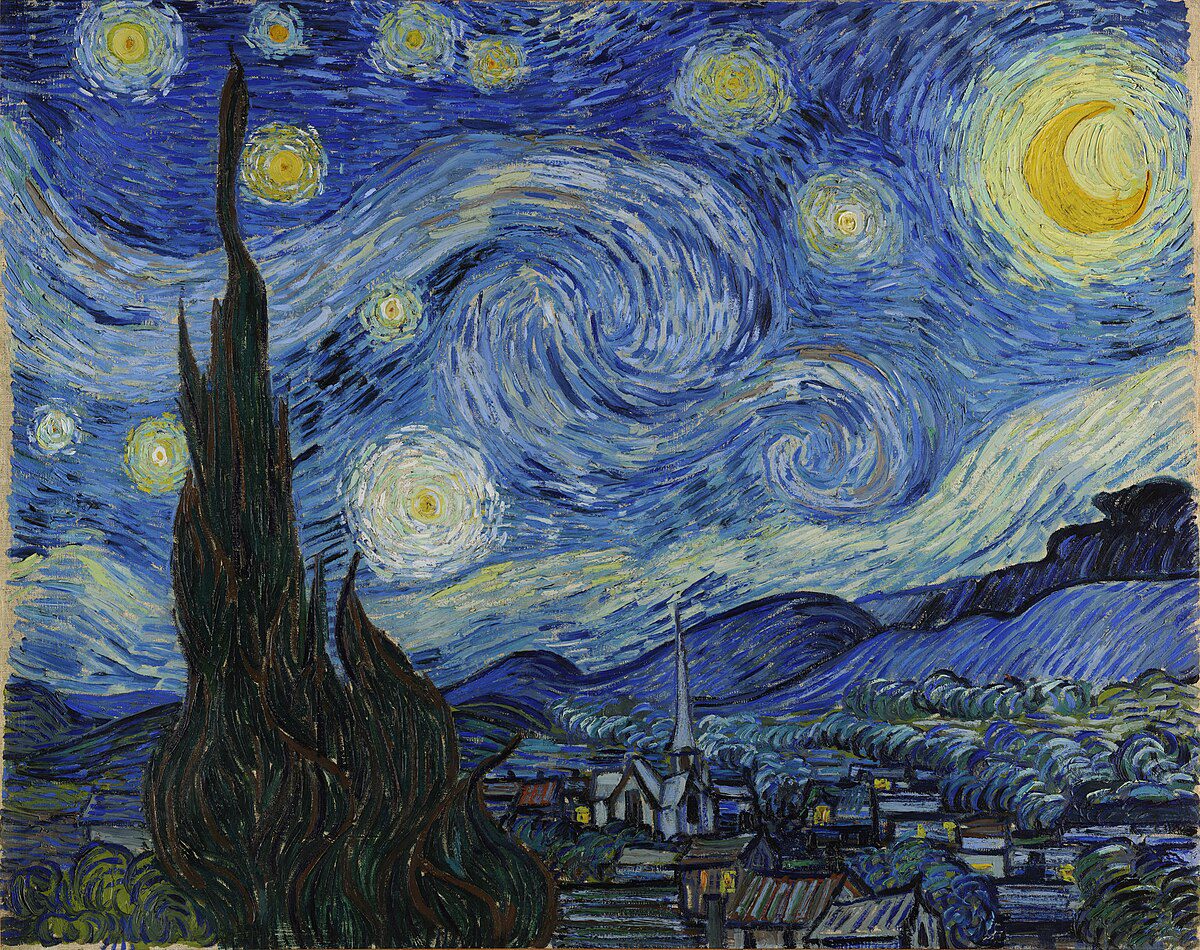In this art talk, I want to dive into the fascinating and tumultuous life of one of the most iconic artists in history, Vincent van Gogh. His story is one of passion, struggle, and an unyielding dedication to his craft. Van Gogh’s art has profoundly influenced many, including myself, and I’m excited to share his journey with you.
Early Life and Beginnings
Vincent van Gogh was born on March 30, 1853, in the small village of Zundert in the Netherlands. He was the eldest of six children, and from a young age, he showed an interest in art. However, his path to becoming a professional artist was far from straightforward.
Van Gogh initially worked for an art dealership, where he got his first exposure to the art world. However, he was not satisfied with the commercial aspect of the job and left. He then tried his hand at being a teacher and a preacher, but nothing seemed to stick. His struggles with finding his true calling and his bouts of depression were constant companions during these years.
The Turning Point
It wasn’t until his mid-twenties that van Gogh decided to pursue art seriously. He enrolled in various art schools and began teaching himself by studying the works of other artists and practicing tirelessly. His early works were heavily influenced by Dutch painters and were characterized by dark, somber tones.
One of his most famous early works, “The Potato Eaters,” reflects this period. The painting depicts a group of peasants sharing a humble meal, and it’s rich with earthy tones and a sense of realism. Van Gogh wanted to portray the harsh realities of peasant life, and this painting did just that.
Paris and the Birth of a New Style
In 1886, van Gogh moved to Paris to live with his brother Theo, who was an art dealer. This move was a game-changer for van Gogh. Paris was the heart of the art world at that time, and he was exposed to new styles and techniques that would drastically change his own work.
He met other artists like Paul Gauguin, Émile Bernard, and Henri de Toulouse-Lautrec, who introduced him to Impressionism and Post-Impressionism. Van Gogh began to experiment with brighter colors and bolder brushstrokes. His work became more vibrant and dynamic, and he started to develop his unique style.
Some of his notable works from this period include “Sunflowers” and “Irises.” These paintings are bursting with color and energy, showcasing van Gogh’s ability to capture the beauty of nature in a way that’s both intense and captivating.
The Arles Period: A Burst of Creativity
In 1888, van Gogh moved to Arles in the south of France, hoping to create an artist’s colony. The move to Arles marked one of the most productive periods of his life. He created over 300 paintings and drawings in just 15 months, including some of his most famous works.
This period gave birth to masterpieces like “The Bedroom,” “The Night Café,” and, of course, “Starry Night.” The vibrant colors and swirling, expressive lines in these paintings reflect van Gogh’s emotional intensity and his deep connection to the natural world.
“Starry Night,” in particular, holds a special place in my heart. The swirling sky, the glowing stars, and the quiet village below all come together to create a scene that’s both otherworldly and deeply comforting. It’s a painting that seems to pulse with life and emotion, and it’s one that I can get lost in for hours. The sense of movement and the vivid blues and yellows have profoundly influenced my own artistic style, and it remains my absolute favorite artwork of all time.
Struggles with Mental Health
Despite his incredible productivity and artistic achievements, van Gogh’s time in Arles was also marked by severe mental health struggles. He experienced episodes of psychosis and deep depression, which ultimately led to his infamous self-mutilation incident where he cut off part of his ear.
Van Gogh’s mental health issues have been the subject of much speculation and analysis. Some suggest he suffered from bipolar disorder, while others think it might have been epilepsy or another neurological condition. Whatever the case, it’s clear that his mental health deeply affected his life and work.
The Final Years
After the ear incident, van Gogh voluntarily admitted himself to a psychiatric hospital in Saint-Rémy-de-Provence. Despite his confinement, he continued to paint prolifically, creating some of his most beloved works, including “Irises” and “The Starry Night.”
In May 1890, van Gogh moved to Auvers-sur-Oise to be closer to his brother Theo and his family. He was under the care of Dr. Paul Gachet, who was also an amateur artist. During this time, van Gogh’s work became even more vibrant and expressive, reflecting his intense emotional state.
Tragically, on July 27, 1890, van Gogh shot himself in the chest. He died two days later, on July 29, at the age of 37. His death marked the end of a life filled with passion, creativity, and unrelenting struggle.
Van Gogh’s Legacy
Van Gogh’s legacy is immense. Despite his short life and the fact that he sold only a handful of paintings during his lifetime, he left behind a body of work that has had a lasting impact on the art world. His use of color, texture, and emotion has influenced countless artists, and his paintings continue to be celebrated and admired worldwide.
His story is also a poignant reminder of the struggles many artists face. Van Gogh’s life was marked by financial hardship, mental health challenges, and a constant search for recognition. Yet, through it all, he remained dedicated to his art, producing some of the most beautiful and emotionally resonant works in history.
How Van Gogh Influenced My Artistic Style
Van Gogh’s work has had a profound impact on my own artistic journey. His ability to convey deep emotion through his use of color and brushstrokes is something I strive to emulate in my own pieces. The way he captured the essence of the natural world, with all its beauty and turmoil, resonates deeply with me.
“Starry Night” is not just my favorite van Gogh painting; it’s a piece that I constantly return to for inspiration. The swirling sky, the vibrant colors, and the palpable sense of movement all come together to create a scene that’s both dreamlike and intensely real. It’s a reminder of the beauty that can be found in the world, even in the midst of chaos and uncertainty.
Whenever I find myself struggling with my own work, I look to van Gogh. His dedication to his craft, despite the many challenges he faced, is a source of inspiration and motivation. He reminds me that art is not just about creating something beautiful; it’s about expressing a piece of your soul and sharing it with the world.



